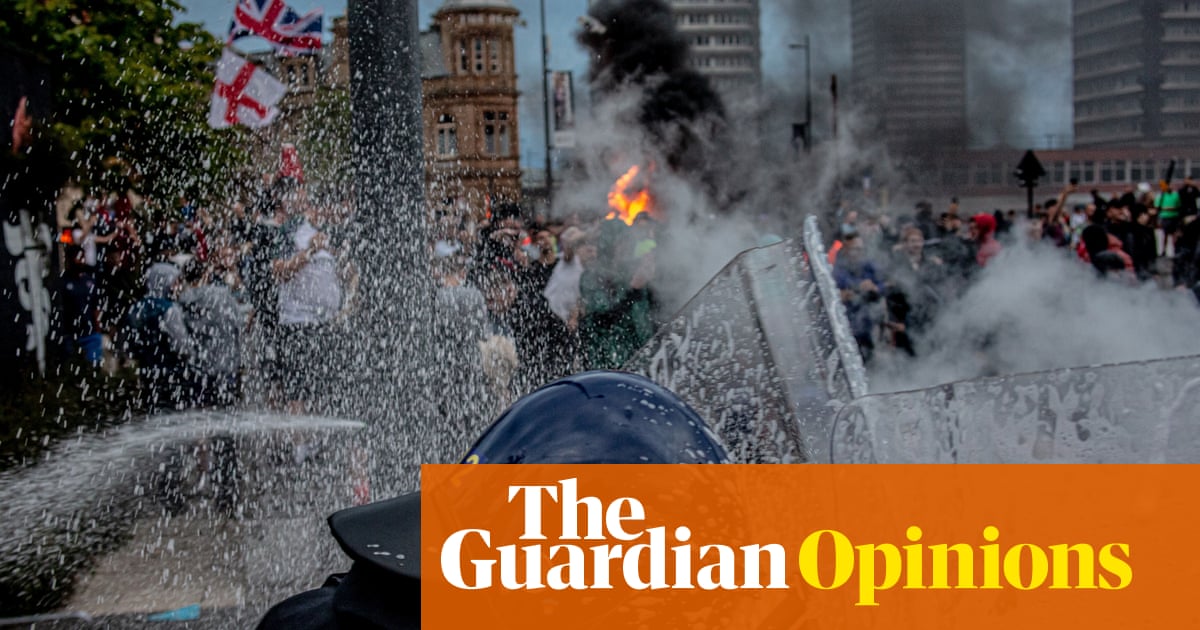It is just over a month since the first riots broke out in Southport – seemingly provoked by rumours containing false information about the alleged identity of the attacker who killed three children and injured eight others, as well as two adults, at a Taylor Swift-themed dance class.
Five further days of disorder followed in a number of English towns and cities and in Northern Ireland – with the rioters apparently taking their lead from what happened in Southport. Violence was aimed at immigrants, at mosques, at Asian-owned businesses and at hotels and other locations where immigrants were thought to be housed.
In the weeks since the riots, a number of fairly firm narratives have become established. The first is that misinformation spread on social media was crucial in bringing people out on to the streets. Second, the anti-immigration rhetoric associated with the far right – and the “tough on immigration” messages now popular across the political spectrum – are assumed to have helped foment the violence. In short, the story goes that these were racist, Islamophobic, anti-migrant riots.
The final piece of the jigsaw concerns the state’s response to the disorder. Tough policing and robust sentencing by the courts are now widely touted as the key to bringing the violence to an end. So far, so straightforward. Nothing more to know or understand.
It seems our standard desire for simple explanations has been sated. But social phenomena are rarely simple, and riots are no exception. They are complicated, requiring nuanced explanation. But this is not just about understanding. It is about prevention, about what needs to be done as a response to such complex events, not least by the government. Rioting is generally an indicator that all is not well in the body politic. We ignore this at our peril.
After the summer of disorder in 2011, along with colleagues from the LSE and the Guardian, I was responsible for a major research project: Reading the Riots. We interviewed hundreds of people, including 270 rioters, more than 100 police officers and dozens of lawyers, community members and victims of the violence and destruction.
Our research was able to illustrate the complexity of those events and how many of the assertions – on matters ranging from the alleged role of gangs to the supposed centrality of social media – were simply untrue. We were also able to draw attention to matters that were otherwise being ignored, including how the misuse of police stop and search powers fuelled the anger that was seen on the streets, and the dangers presented by the conveyor-belt justice that we witnessed in our courts at the time.
Just as in 2011, the temptation to rush to judgment is once again present. And yet, there is much about the 2024 riots that remains unclear. What was the background of those out on the streets? Who were they? What was in their minds as they rioted, or stood by as others threw bricks and attacked people and places? How did the events in different locations and at different times vary? We should not assume that what happened in Blackpool was the same as what occurred in Belfast, for example.
Though the authorities were initially caught unprepared, the eventual end of the 2011 disorder was thought to have been a result of mass policing and tough sentencing by the courts. Keir Starmer, then the director of public prosecutions, was convinced that the speed with which people had been brought before the courts was crucial in ending the violence.
This experience seems to have shaped much of his and the government’s reaction to 2024’s events. Well over 1,000 people have now been prosecuted and many sentenced, with more to come. Is this all necessary and proportionate? What about the teenagers – the children – caught up in the disorder? Should we be locking them away?
In 2011, Reading the Riots was provoked by the refusal of the then coalition government to institute a formal inquiry amid the plethora of largely unevidenced claims that were being made about what had happened and why. The prime minister, David Cameron, was steadfast in his refusal to countenance a public inquiry. It was “criminality pure and simple”, he said; nothing more needed to be done.
The communities affected were largely ignored. Almost nothing was done to address the problems the riots so clearly illuminated. We find ourselves in a similar position today and the danger is once again that the government will fail to investigate the events and will consequently fail to act. Now is the time for proper reflection. Not for lazy assumptions, or presuming that what we’ve seen on our screens means that we somehow understand all that has happened and know what, if anything, needs to be done.
We have to go back more than 40 years to find a better model of how to respond, this time to when Margaret Thatcher was prime minister. In 1981, in the immediate aftermath of the Brixton riot, and much against her inclination, Thatcher was persuaded by her home secretary, Willie Whitelaw, that a public inquiry was required.
The outstanding judicial figure, Lord Scarman, was appointed, insisting when accepting the job that the inquiry would be speedy, public and wide-ranging. The outcome was a report that, despite any faults it may have had, impressed many, had much influence and has stood the test of time. The question now is will Starmer follow Cameron’s lead or Thatcher’s?
The former may be the easier choice, but it will leave us none the wiser. The latter offers at least the chance that society might understand how and why people rioted. Why would we choose to stumble into the dark?
-
Do you have an opinion on the issues raised in this article? If you would like to submit a response of up to 300 words by email to be considered for publication in our letters section, please click here.
